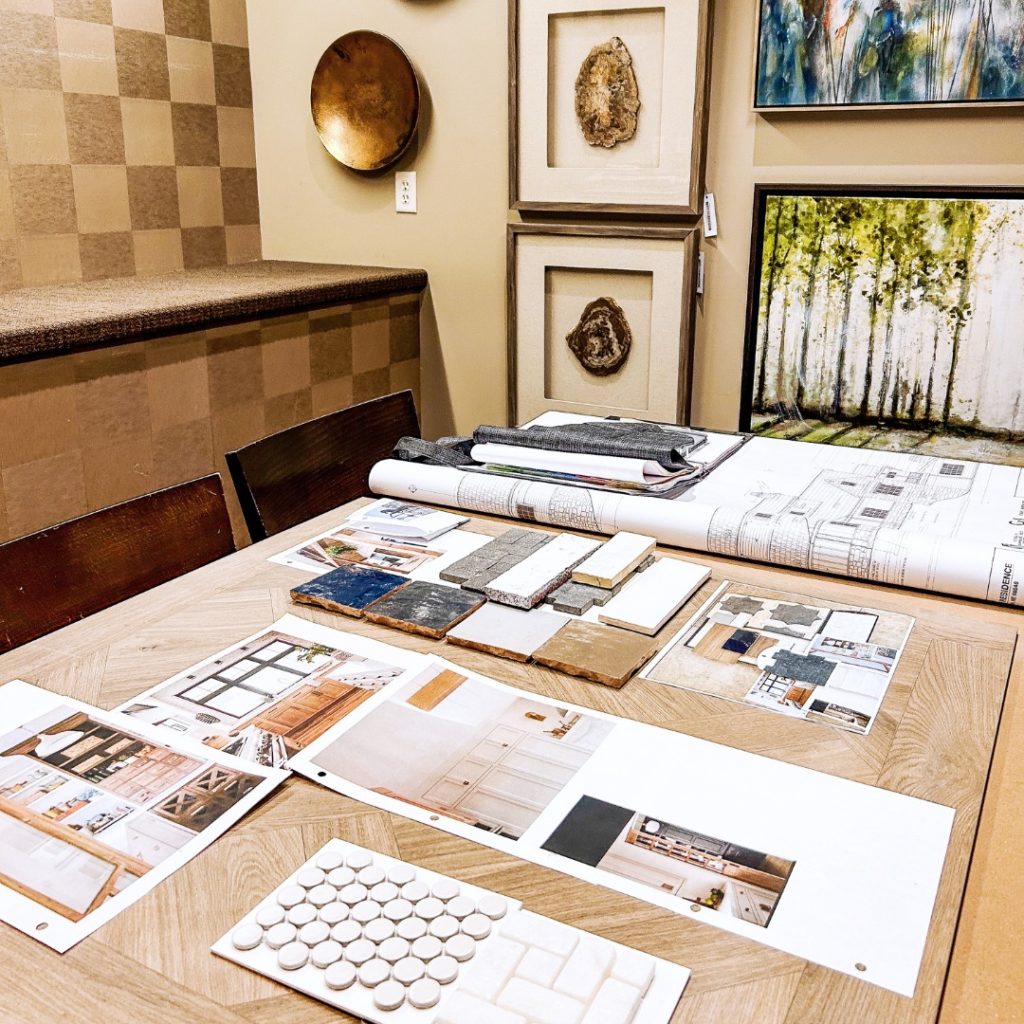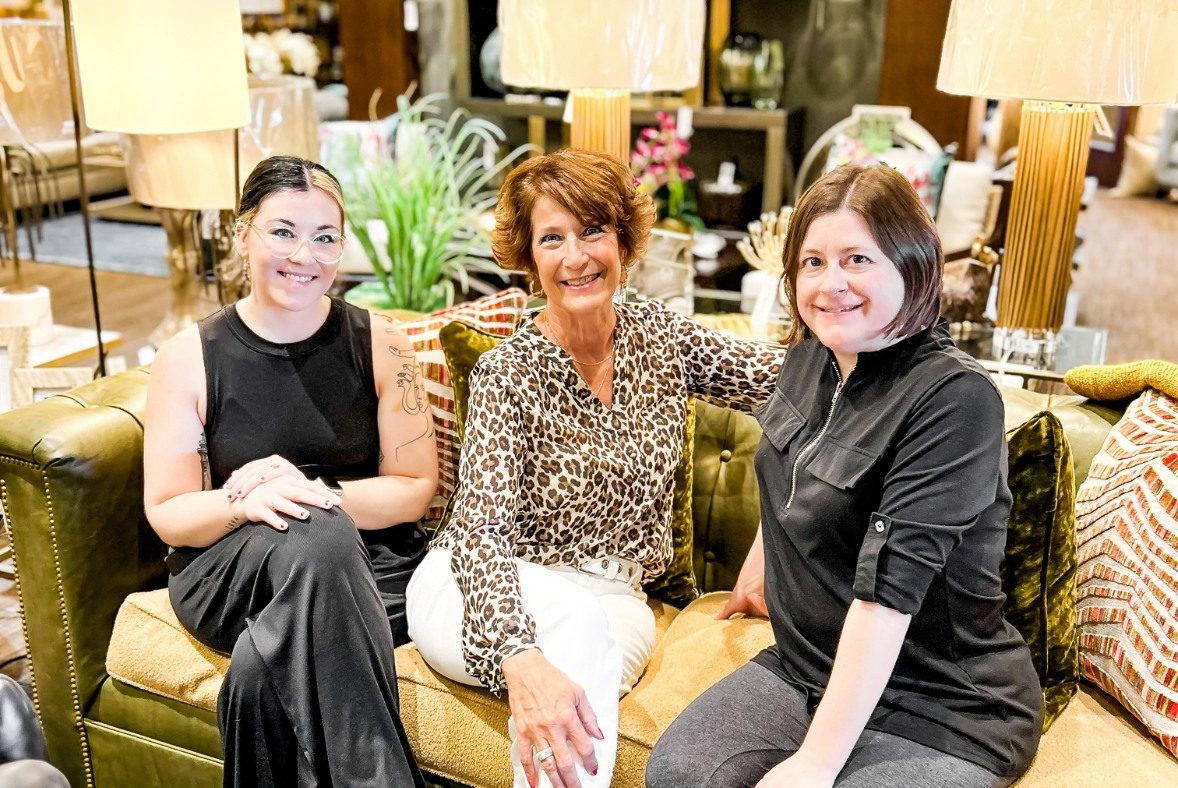
Interior Design vs. Interior Decorating are often intertwined in the world of creating beautiful, functional living spaces. Yet these two distinct disciplines are interconnected and often come to the forefront when meeting with clients.
While these terms are sometimes used interchangeably, they represent two unique approaches to transforming interiors.
Understanding the difference between these two practices is crucial for anyone looking to enhance their living spaces effectively. In this article, we’ll delve into the world of interior design and decorating, exploring how they cater to different needs and why they play complementary roles in crafting exceptional interiors.
Interior Design vs Interior Decorating: Unraveling the Distinctions
Before we explore the contrasting approaches of interior designers and decorators, let’s clarify what each term entails. Interior design, which is our expertise here at Interiors Joan and Associates, encompasses a comprehensive process that goes beyond mere decoration. It’s about creating spaces that are not only aesthetically pleasing but also highly functional, safe, and tailored to the unique lifestyles of clients.
On the other hand, interior decorating is primarily concerned with enhancing the look and feel of a space through creative styling, including the use of color, furniture, accessories, and decor. Now, let’s delve into how these distinctions manifest in the design and decoration process.
Interior Design: The Art of Functionality and Long-term Planning
Interior designers are akin to the architects of interior spaces. They are trained professionals who possess a deep understanding of structural elements, spatial planning, and building codes.
Their primary focus is to optimize the functionality and safety of a space while also considering the long-term needs of their clients. Here’s how interior design addresses these needs:
- Functionality: Interior designers prioritize the functionality of a space. They work closely with clients to understand their day-to-day activities, habits, and needs. This information guides them in designing layouts, selecting furniture, and determining the placement of fixtures to create a space that not only looks good but works well for its occupants.
- Safety: Safety is paramount in interior design. Designers ensure that spaces meet safety standards, considering factors like proper lighting, ventilation, and accessibility. They also take into account the use of non-toxic materials and make recommendations for fire safety and emergency egress.
- Long-term Planning: Interior designers adopt a holistic approach that considers the future needs of their clients. Whether it’s a growing family, evolving lifestyle, or changing preferences, designers plan for flexibility and adaptability. This includes choosing durable materials and timeless design elements that stand the test of time.
Interior Decorating: The Art of Aesthetics and Atmosphere
Interior decorators, on the other hand, are masters of aesthetics and ambiance. They excel in the art of styling and are experts at transforming spaces into visually captivating and emotionally resonant environments. Here’s how interior decorating caters to these needs:
- Aesthetics: Interior decorators are skilled in choosing color palettes, furniture, artwork, and decor that harmonize to create a cohesive and visually appealing look. Their focus is on selecting elements that complement each other and reflect the client’s personal style.
- Atmosphere: Decoration goes beyond aesthetics; it’s about evoking emotions and setting the right mood. Decorators use their expertise to create spaces that feel inviting, cozy, elegant, or any other desired atmosphere. Lighting, textiles, and accessories play crucial roles in achieving this.
- Personalization: Decorators work closely with clients to understand their preferences and style. They infuse a sense of the client’s personality into the space, ensuring it feels like a reflection of their tastes and preferences.
The Symbiotic Relationship
While interior design vs. interior decorating each have its distinct focus, they are not mutually exclusive. In fact, they often work hand-in-hand to create exceptional interiors. Interior designers lay the foundation by optimizing the functionality and safety of a space, and interior decorators build upon this foundation by infusing style, personality, and emotion into the design.
Consider a well-designed kitchen by an interior designer; it will have a functional layout with safety features, quality materials, and ample storage. An interior decorator can then come in and select the perfect color scheme, lighting fixtures, and decor to make the kitchen visually appealing and emotionally satisfying.
Balancing Form and Function
In the realm of interior design and decorating, it’s crucial to recognize that both disciplines have their place and purpose. Interior designers prioritize functionality, safety, and long-term planning to meet the practical needs of clients, while interior decorators focus on aesthetics, atmosphere, and personalization to create visually stunning and emotionally satisfying spaces.
When these two approaches collaborate, the result is a harmonious blend of form and function that transforms ordinary spaces into extraordinary ones. So, whether you’re embarking on a home improvement project or seeking professional guidance, our talented team of designers here at Interiors Joan and Associates are here to empower you to create spaces that truly resonate with your vision and lifestyle.
